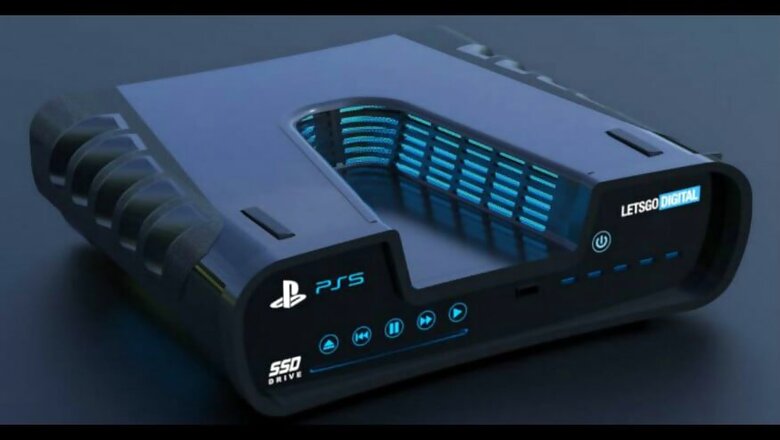
views
Sony PlayStation 5 has been much discussed in the gaming world, and yesterday at the virtually hosted Game Developer Conference 2020, Sony finally unveiled much awaited confirmation of key specifications of the upcoming gaming console generation. This has already sparked off heavy debate on whether the PlayStation 5 would be able to topple Microsoft's venerable Xbox Series X, which has also seen its key specifications revealed. Before we get into that, however, here are the key technical details that make the PlayStation 5, and give us a fair idea of what you can expect from Sony's next generation console.
Straight off the bat, Sony has used eight custom cores based on the AMD Zen 2 core architecture for processing power. This octa-core setup sees each core being clocked at 3.5GHz, which makes for a fairly strong amount of firepower under the hood. In terms of graphics, the Sony PlayStation 5 will feature a custom graphics chip based on the AMD RDNA 2, which has 36 compute units running at 2.23GHz each to generate 10.28 teraflops of graphics power. The graphics chip comes with 16GB of GDDR6 video memory, and advances made to the fast storage standard means that the more amount of memory will also be used more efficiently, thereby freeing up more memory at all times and in turn offering smoother performance, at least on paper.
Sony has also upgraded the entire operation chain in the PlayStation 5, including file decompression and mapping, game load management and more, and the entire setup is now optimised to run on the fast SSD standards, along with the faster graphics memory and higher processing power. It is this that leads to claims that the Sony PlayStation 5 can work 100x faster than its predecessor, the outgoing PlayStation 4 Pro. In terms of storage, the Sony PlayStation 5 comes with 825GB of custom NVMe SSD with 5.5Gbps bandwidth, which is a major reason for the performance upgrade in the new console.
Interestingly, you can expand the storage beyond the 825GB onboard. However, this can be a tricky and expensive process. Sony stated that the PS5 will support standard external USB hard drives, but these drives have nowhere close the bandwidth required for the console to function at peak. As a result, if you hook up your existing hard drives via USB, you will only be able to run older PlayStation 4 titles on the PS5 through this medium. Even SSDs don't have it easy — while Sony has stated that the PS5 will support M.2 SSD storage expansion, using a standard, PCIe 3.0 interface SSD will not work, and you will have to buy a PCIe 4.0 NVMe external SSD to plug in. This, at least in the initial years, would be very expensive, as we've seen with all new technology standards.
In terms of overall performance, the Sony PlayStation 5 will (of course) support HDR gaming, and even 8K gaming, should you please. The console also has support for 4K gaming, and to keep support alive for optical drives, the PlayStation 5 will launch with a 4K UHD Blu-ray drive slot. Unfortunately, Sony has not announced the ports that the PlayStation 5 will come with, and the presence of the optical drive slot is pretty much the only information that we have on what its exterior shell would officially look like.
What's particularly impressive is Sony's focus on audio — the PlayStation 5 comes with a dedicated Tempest 3D audio engine that, according to Notebook Check, can "process audio from hundreds of in-game sound sources to offer an elevated level of realism without the need for expensive audio gear." This seemingly includes positional audio tracking, while taking into account individual ear properties to deliver a heavily customised aural experience. Sony appears to be putting a lot of emphasis on the immersive sound experience, which is great since audio design in games has improved leaps and bounds, and can make massive impact in many storylines.


















Comments
0 comment